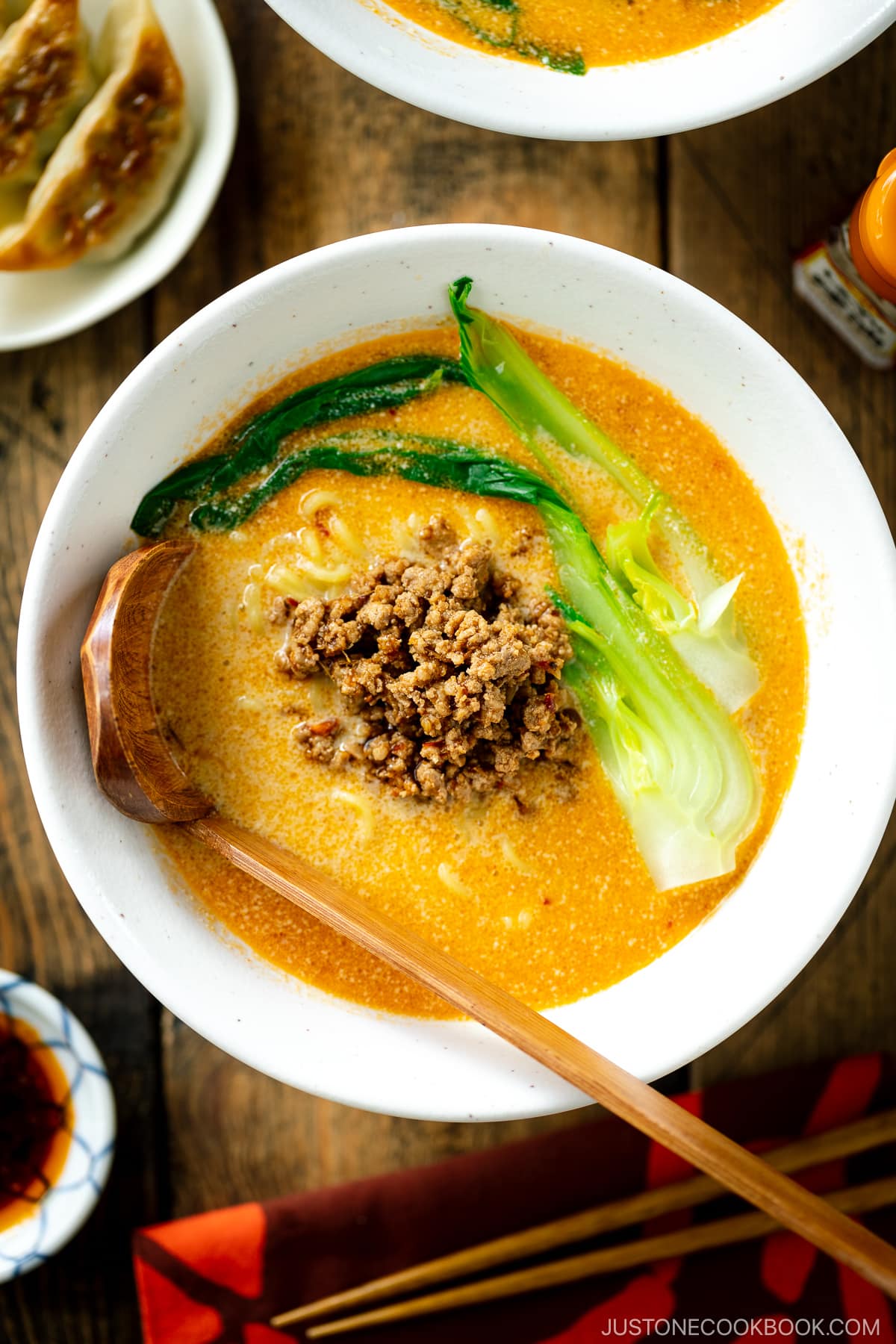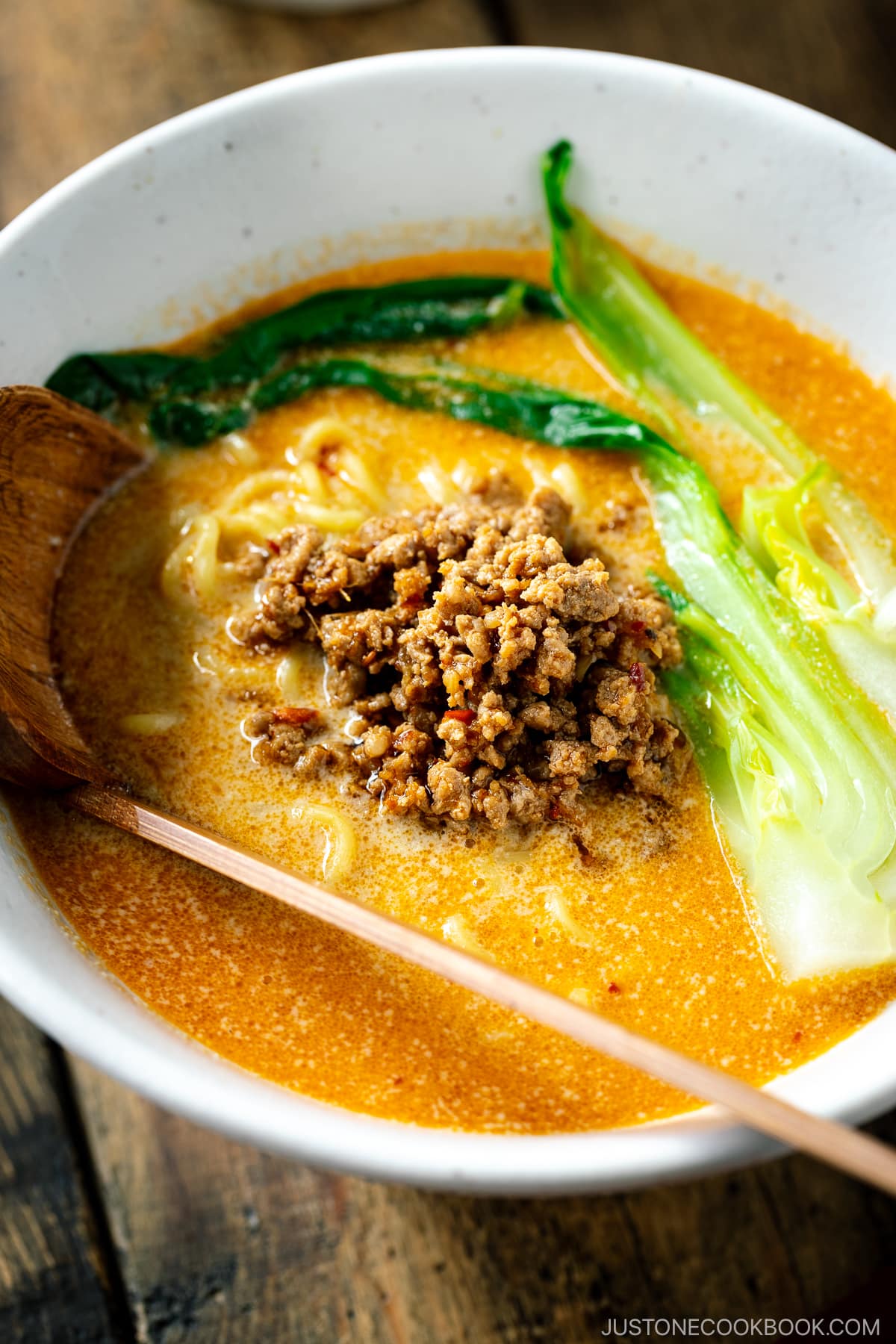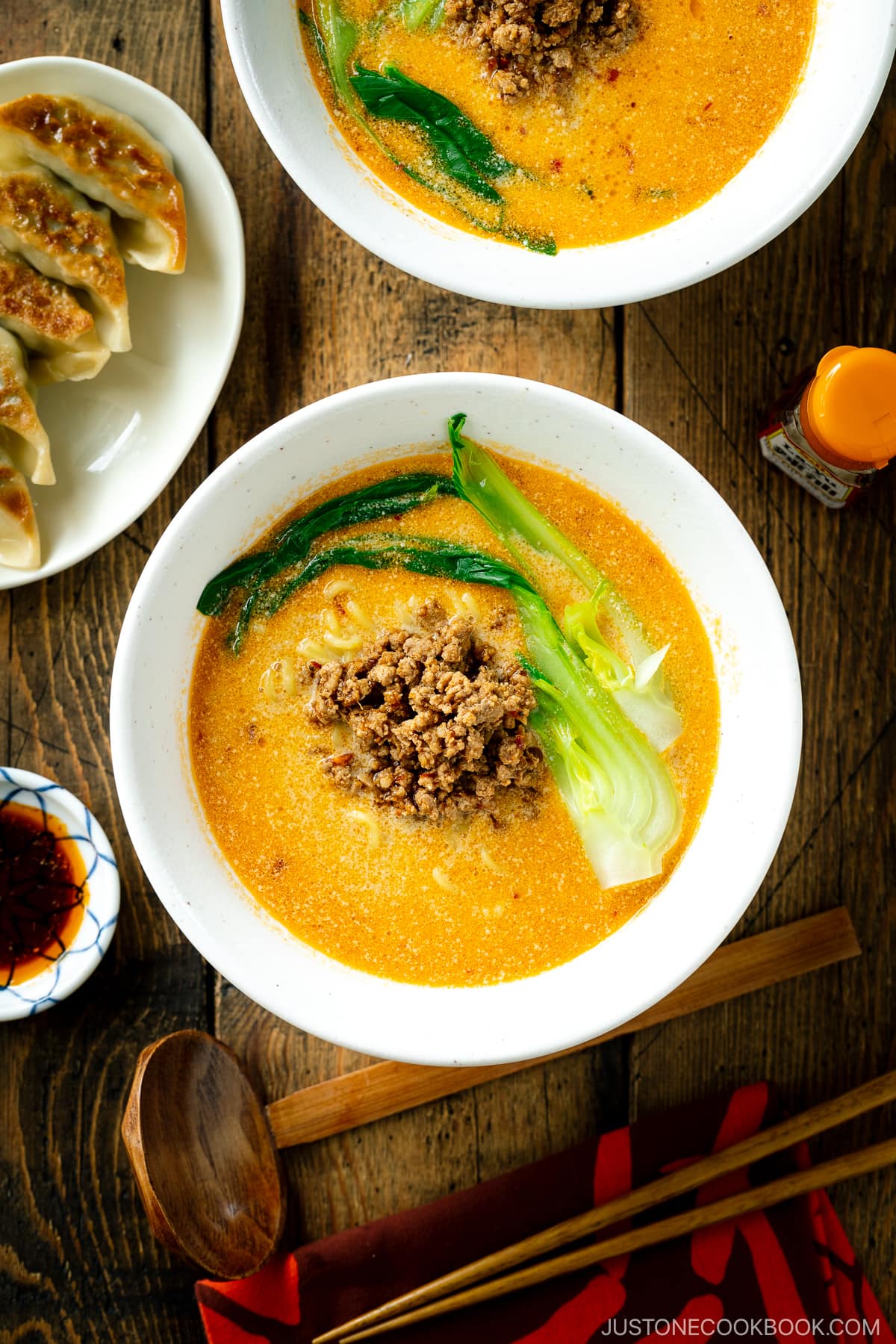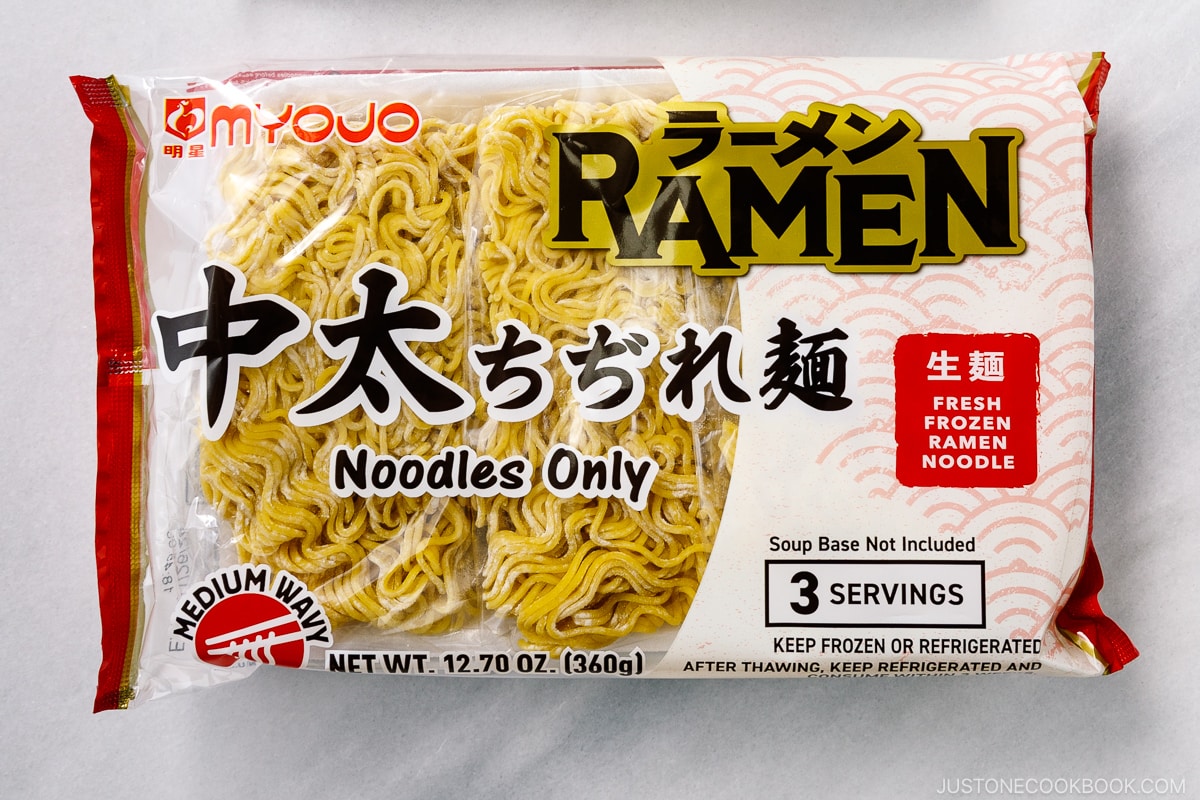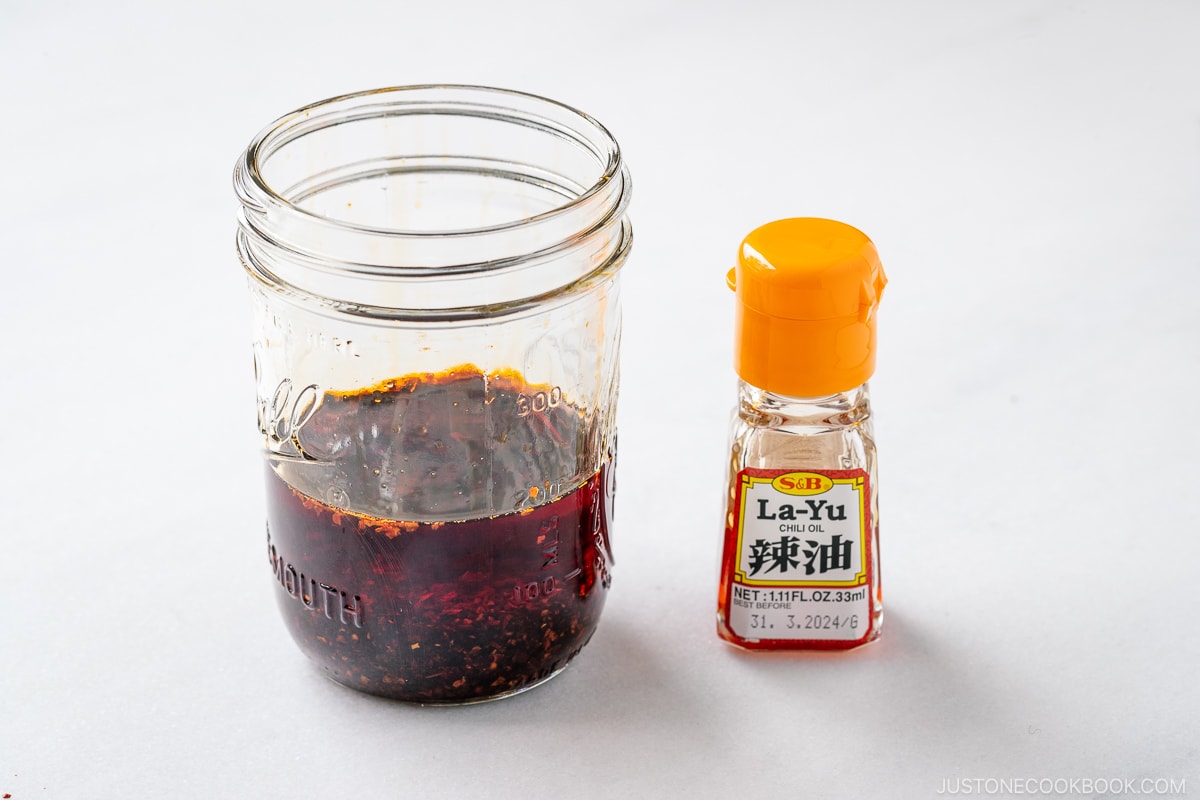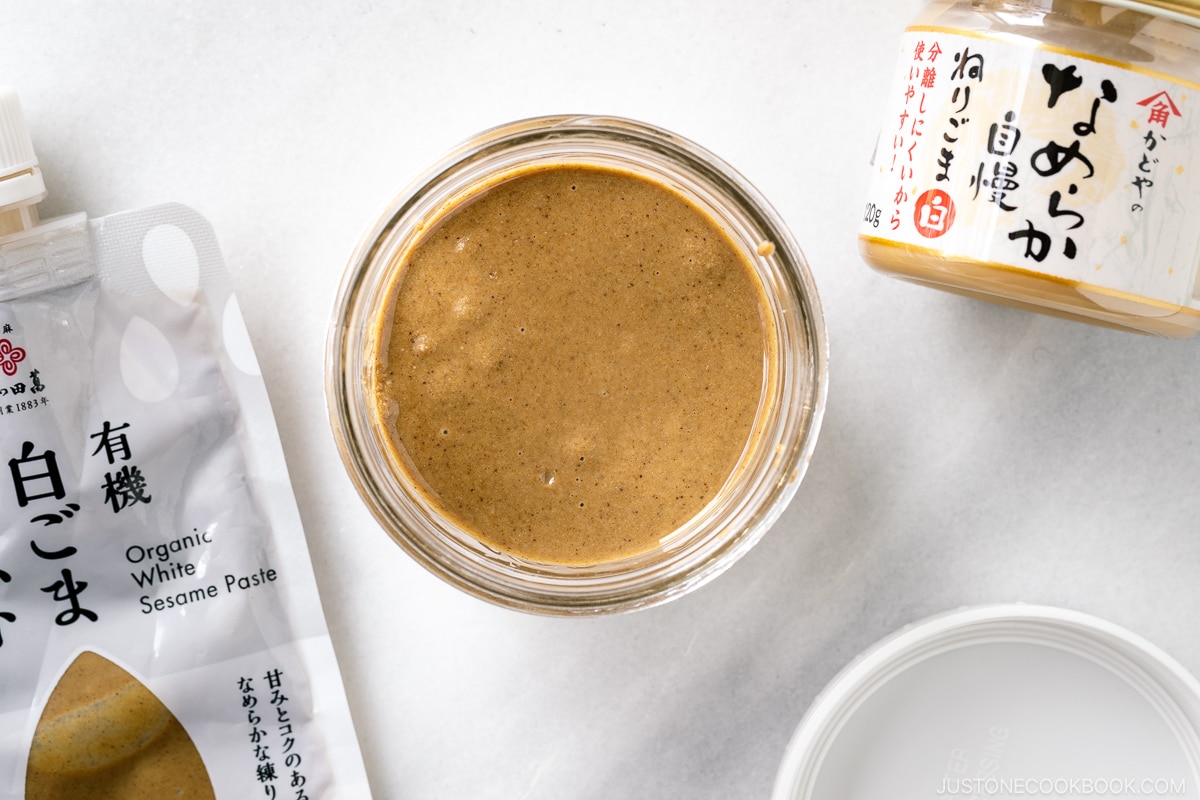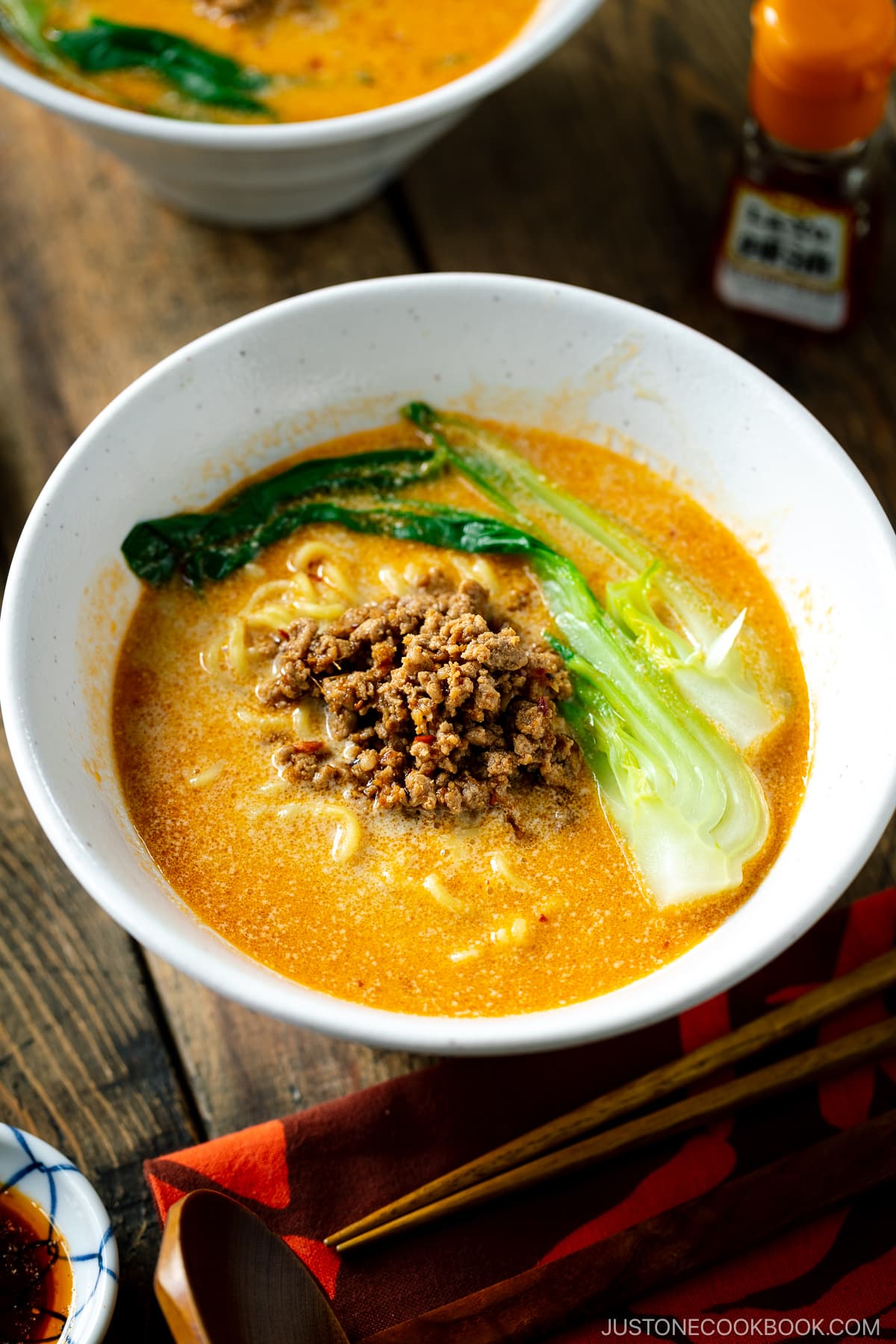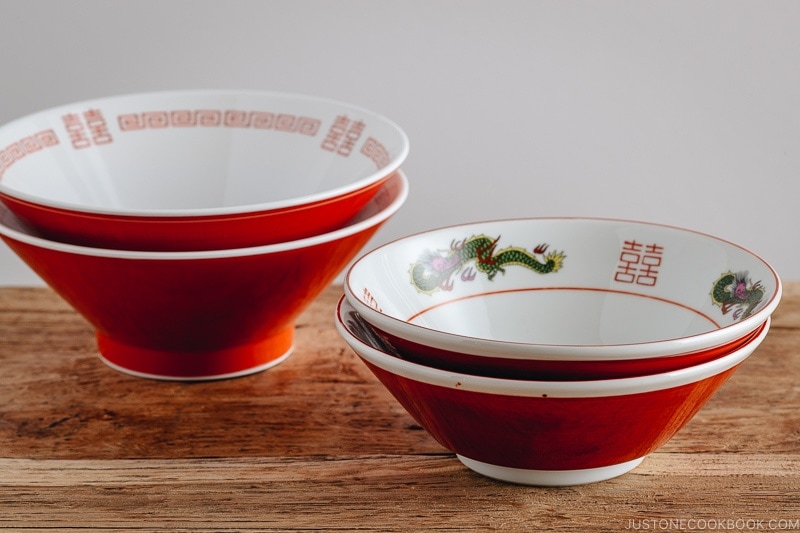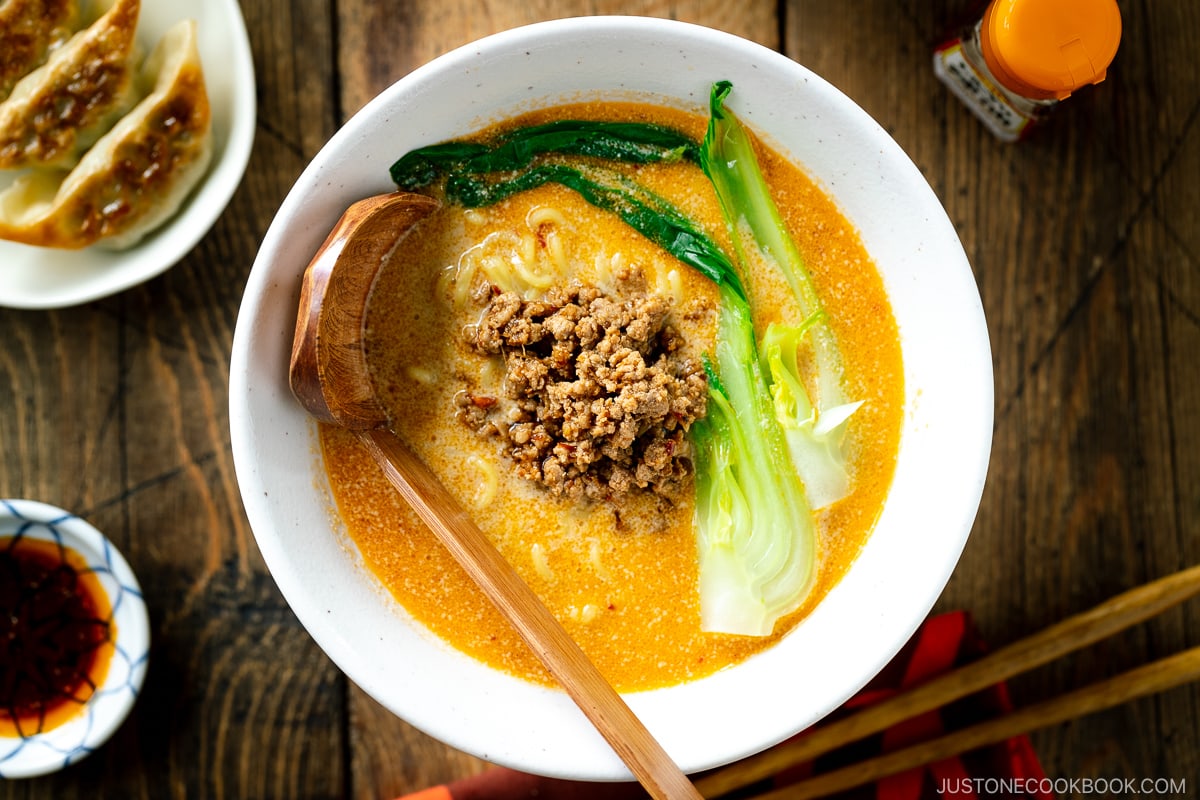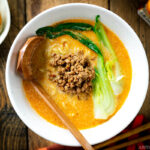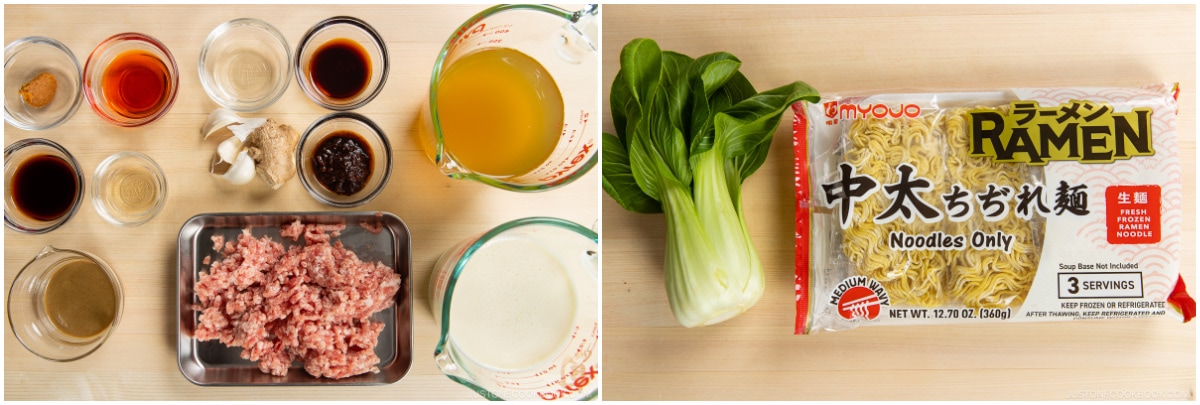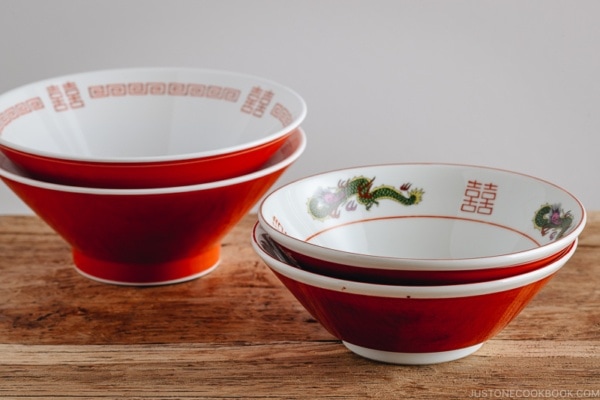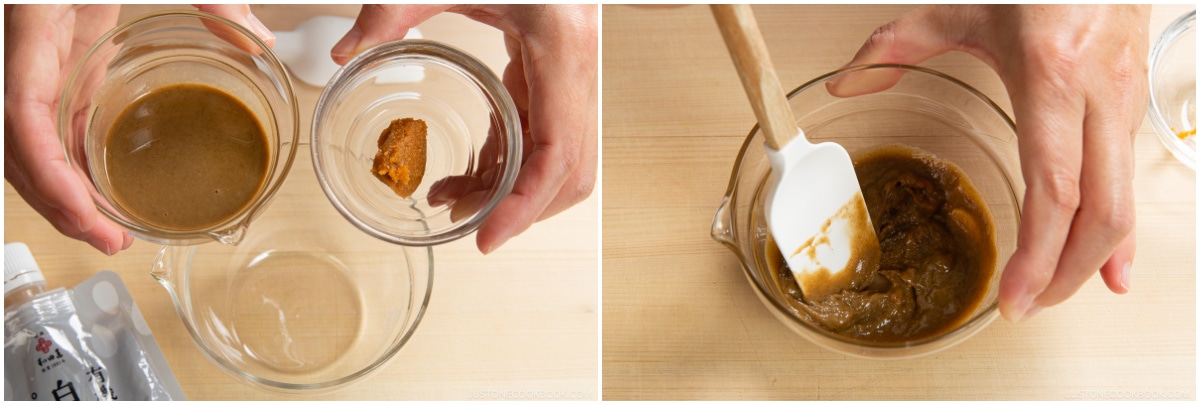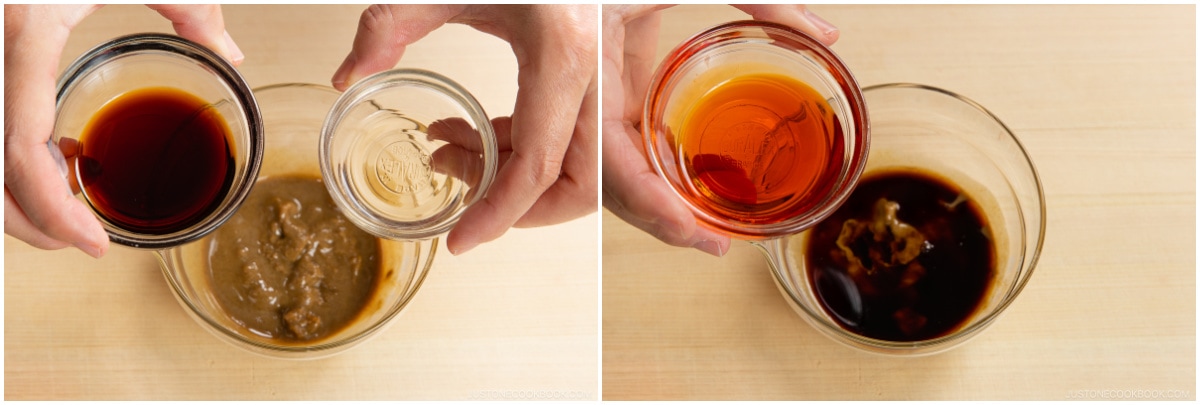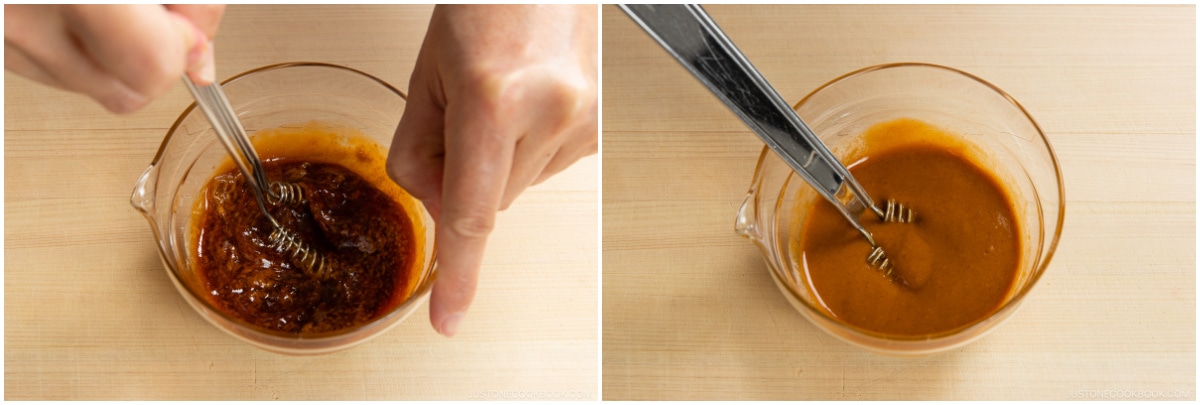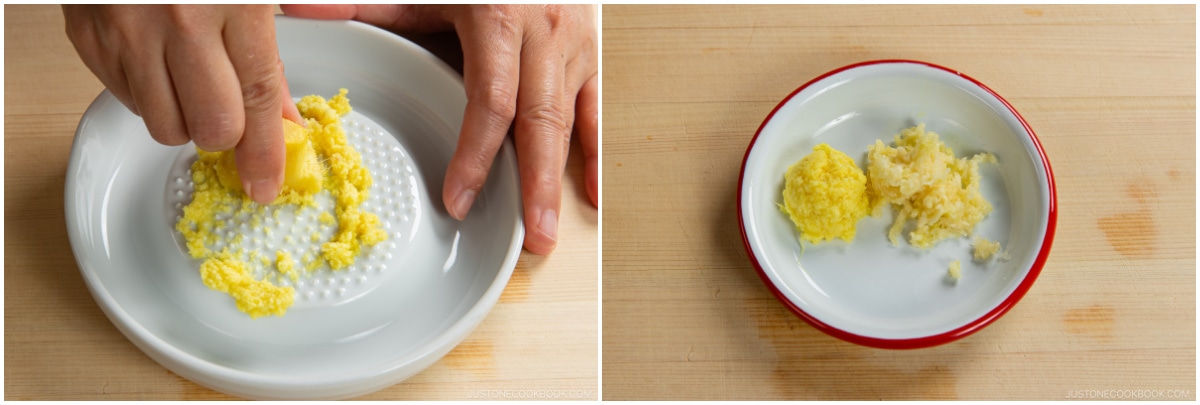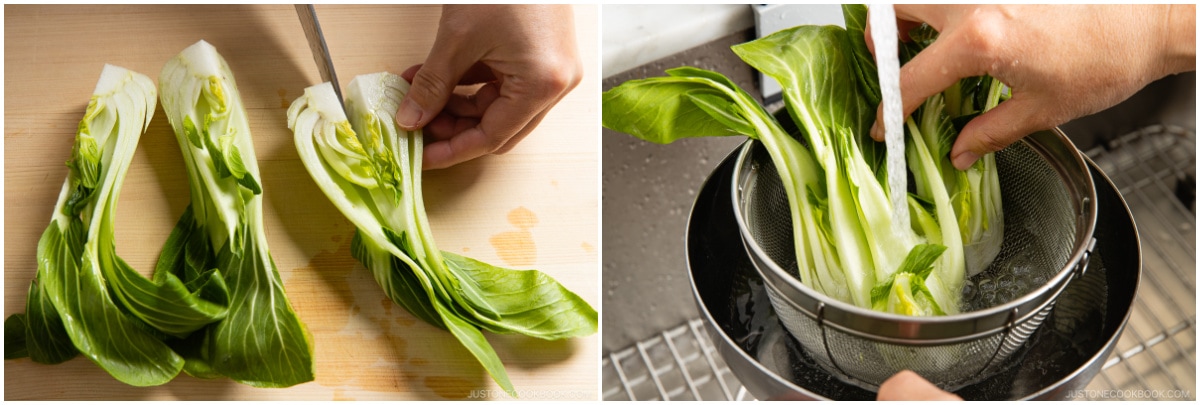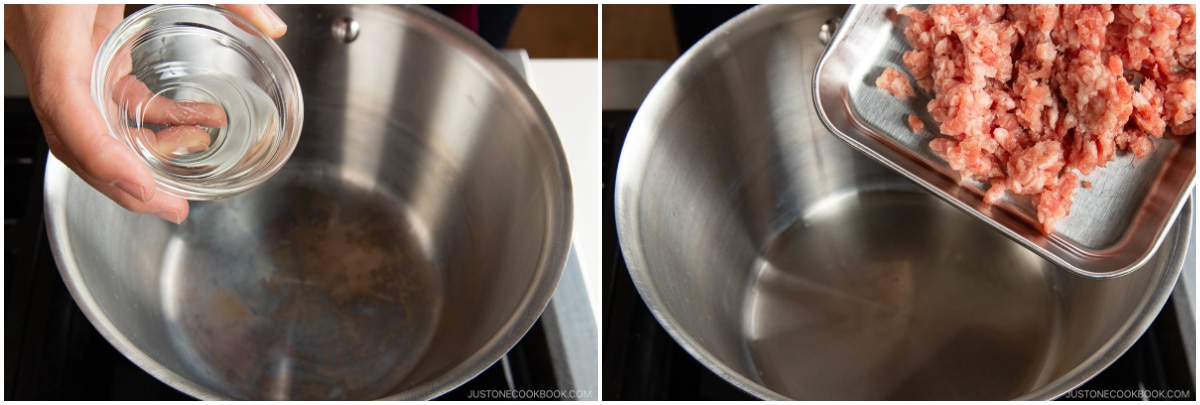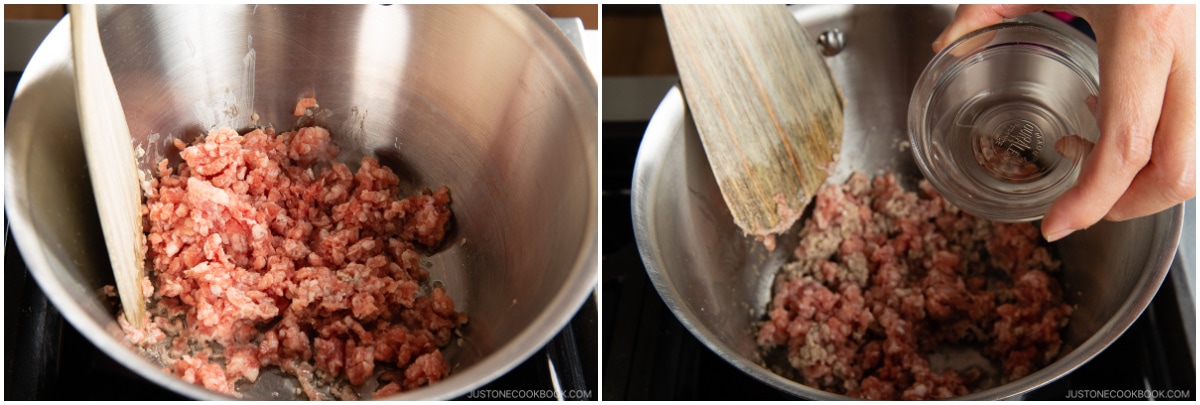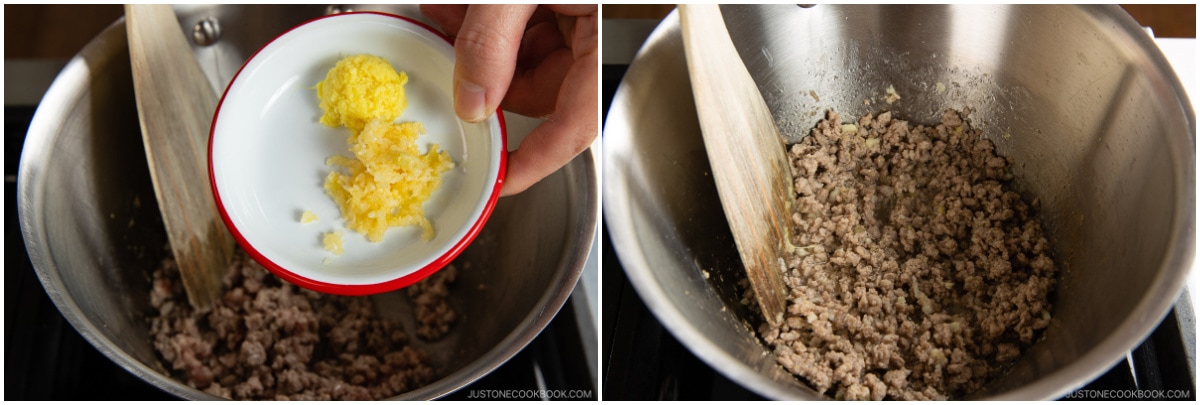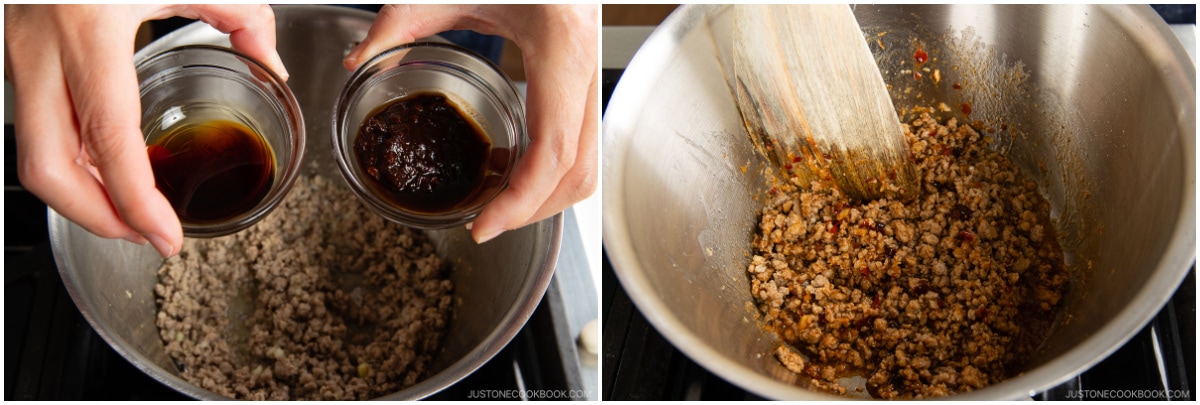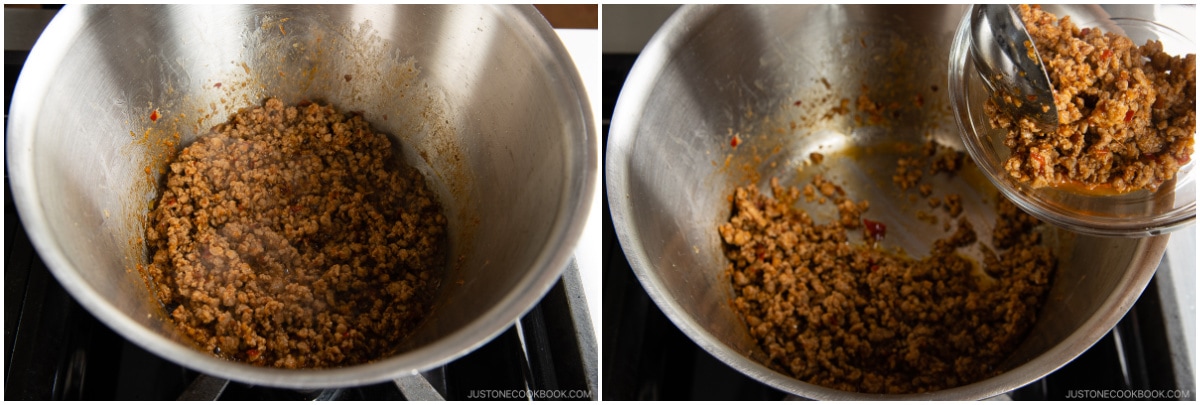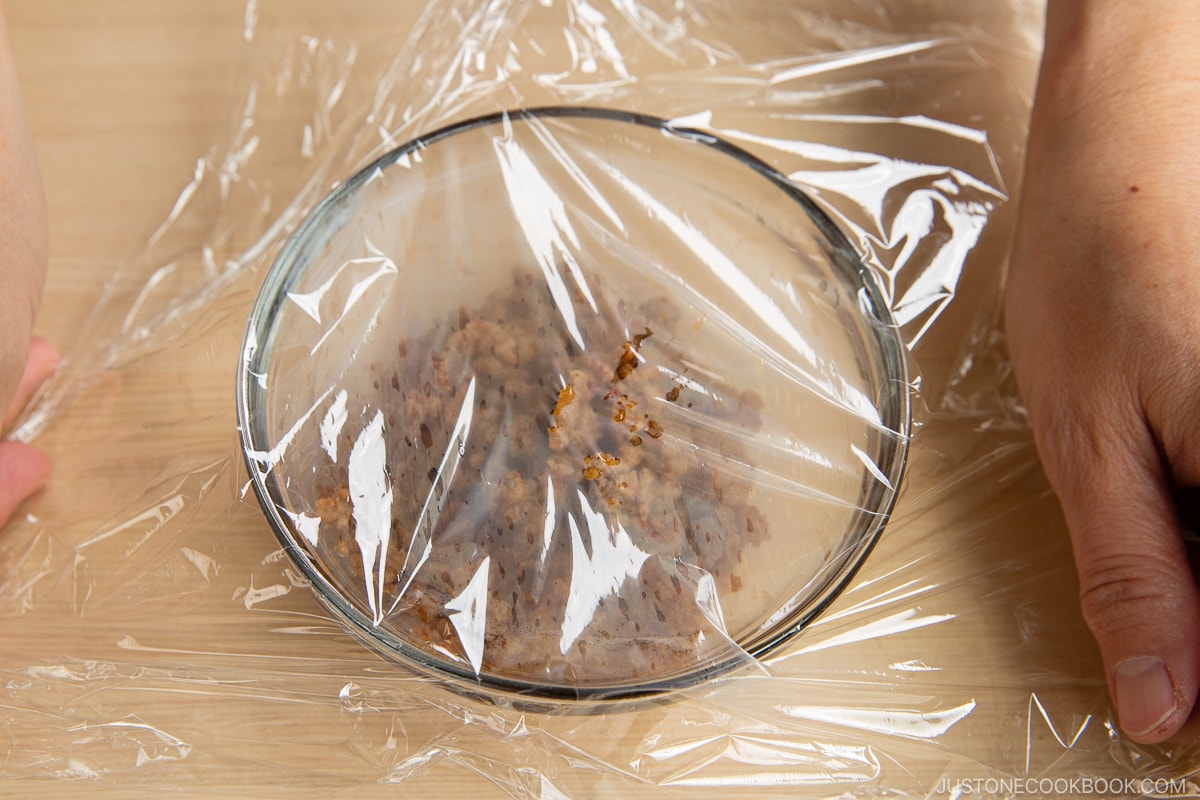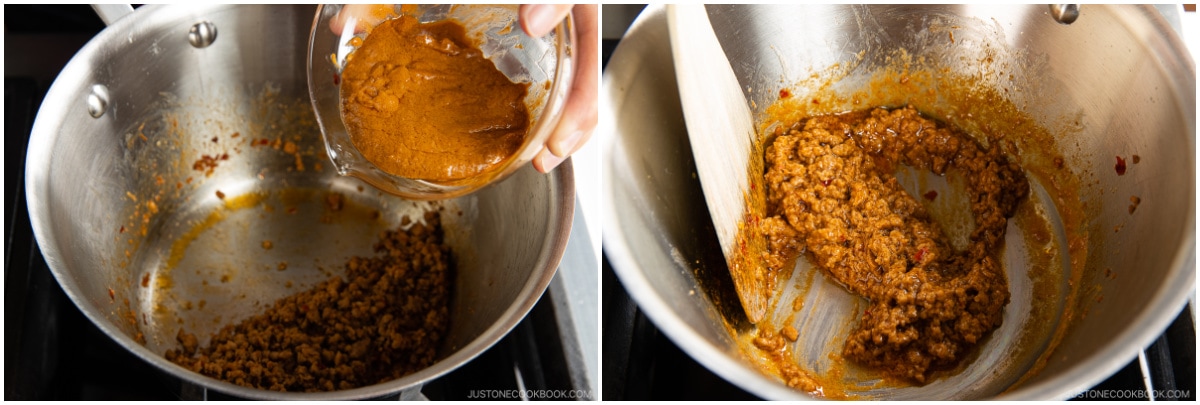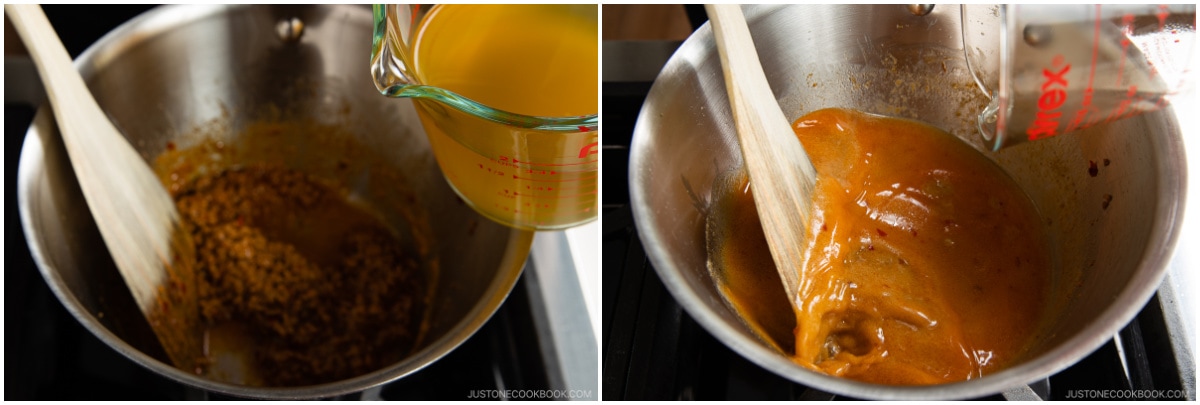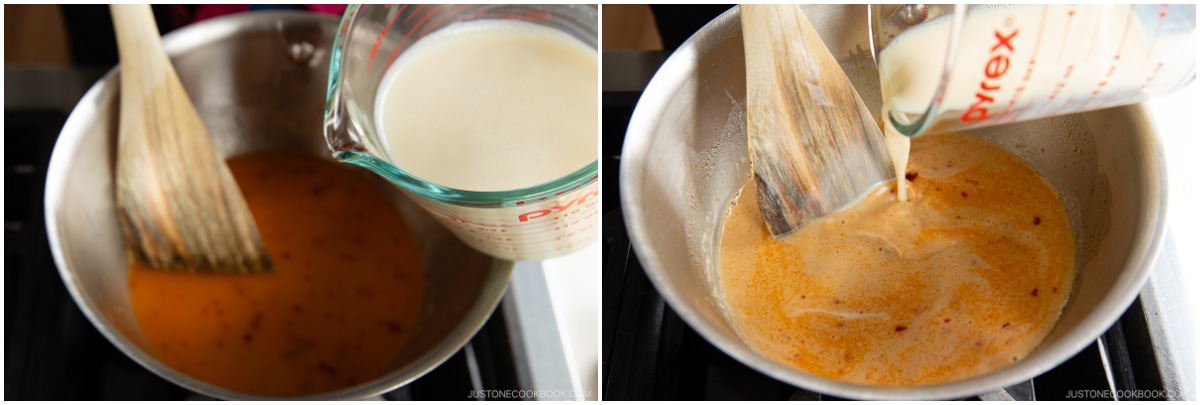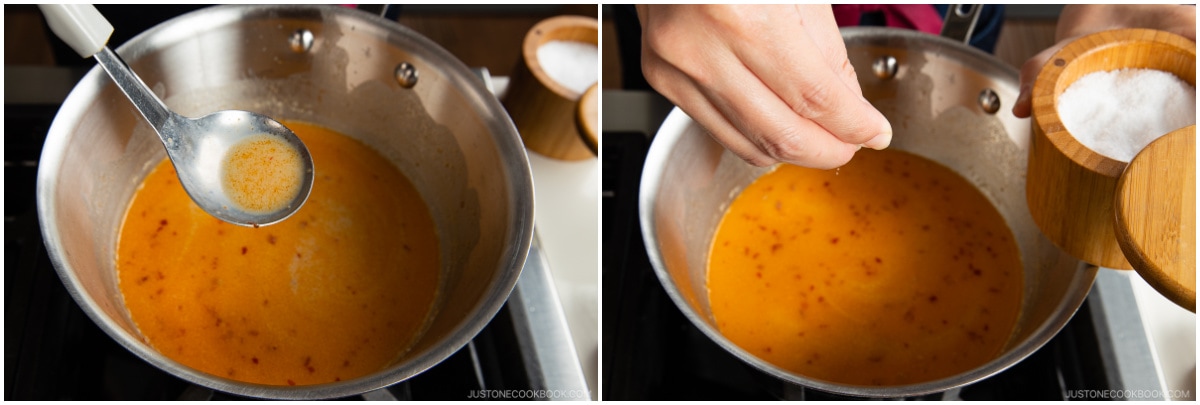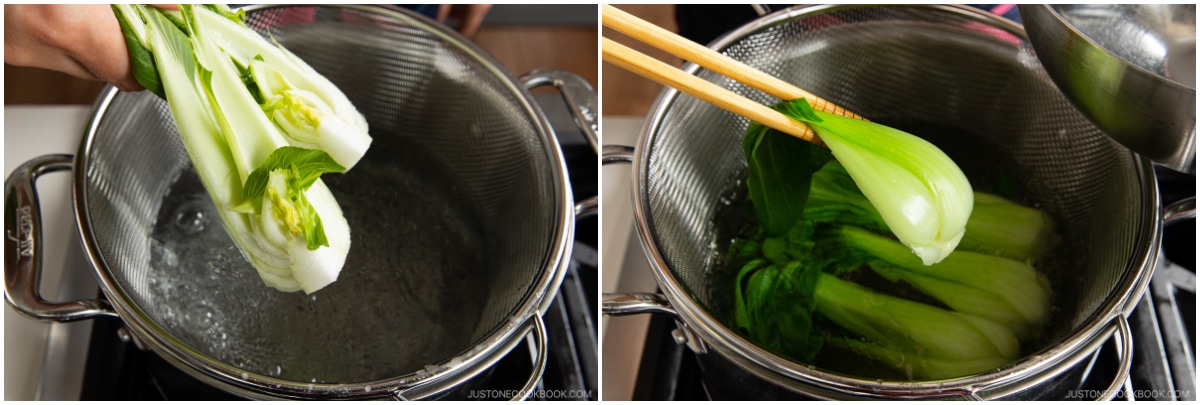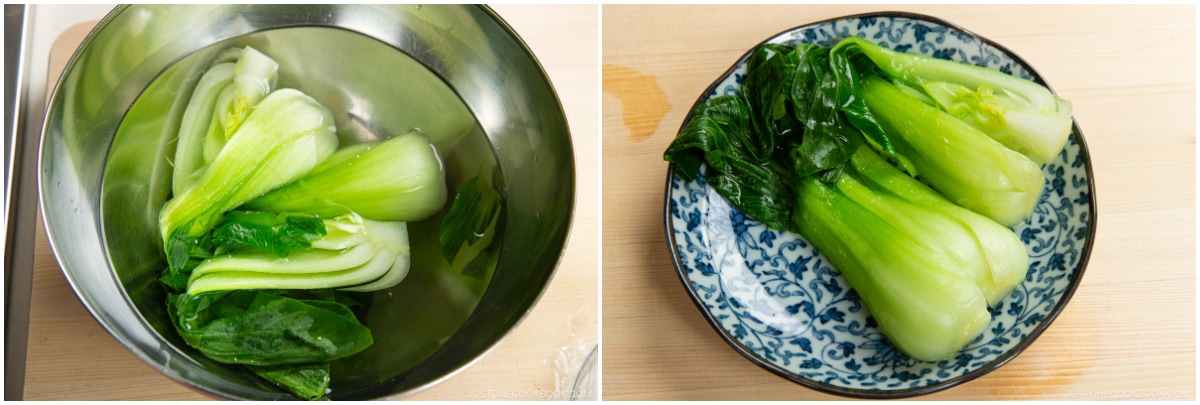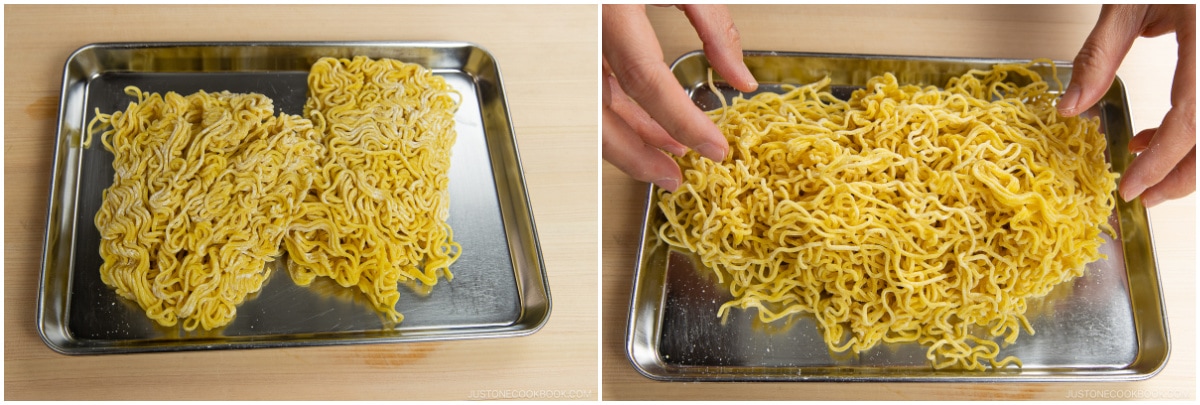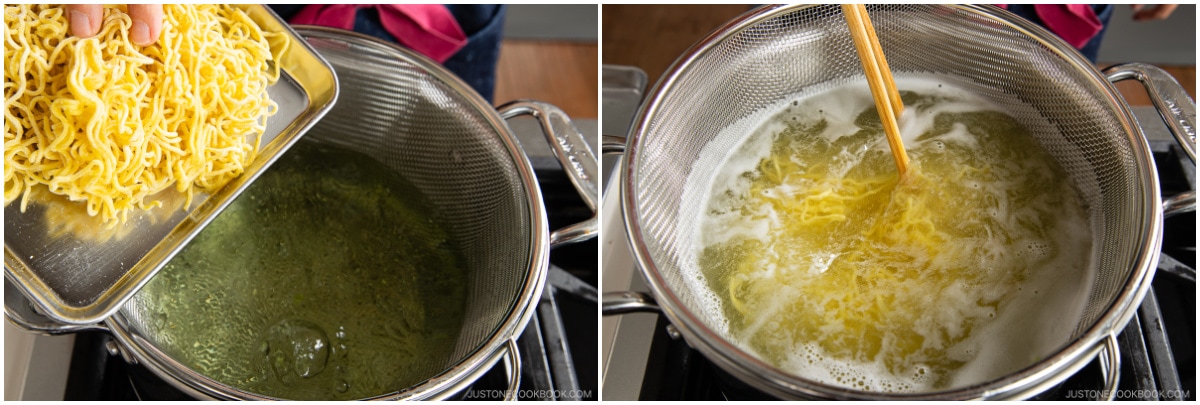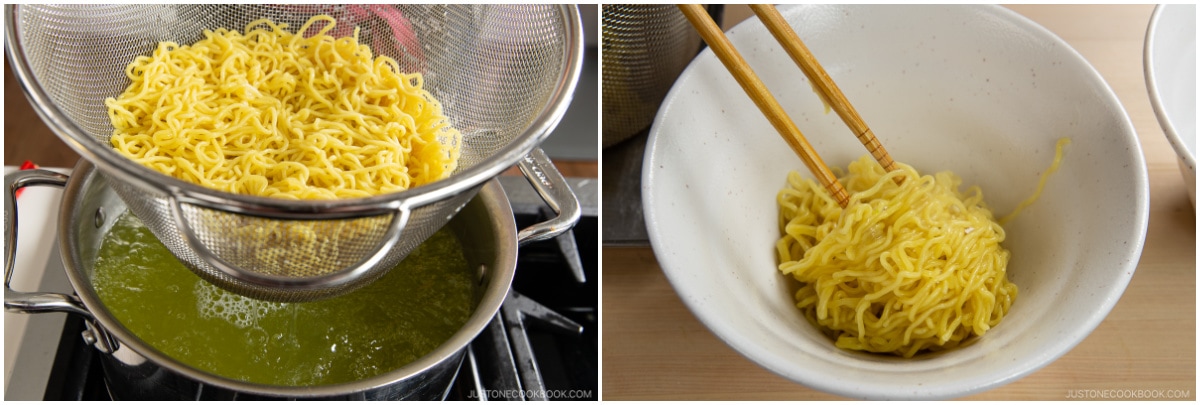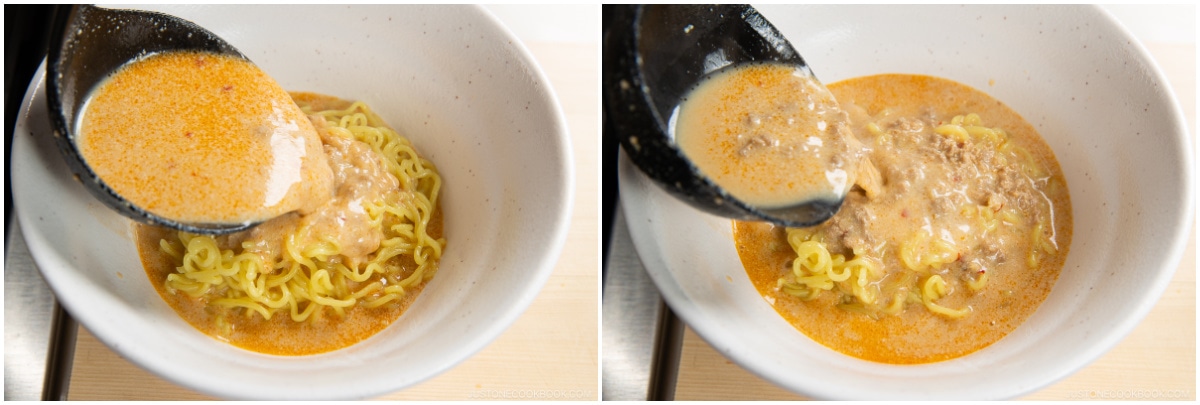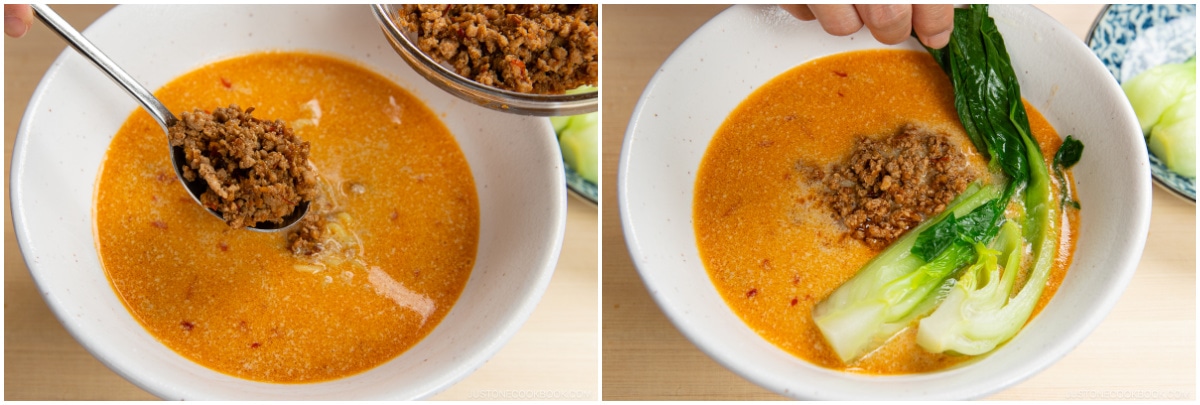Can we say YES to another delicious, better-than-restaurant ramen recipe? Today I’m bringing you Tan Tan Ramen (or Tantanmen, 坦々麺)—a spicy and superbly flavorful noodle soup bowl you’d need in your life. It is also easy to make and completely customizable. I think you will go wild about it once you try it!
What is Tan Tan Ramen?
Tan tan ramen—as it is called in the US—is known as tantanmen (坦々麺) in Japan. Unlike classic ramen varieties (mainly shio ramen, miso ramen, and shoyu ramen), tantanmen doesn’t have the usual toppings such as chashu and ramen egg (ajitsuke tamago or ajitama). The ingredients and seasonings vary depending on the ramen shop. However, the most distinctive feature of tantanmen is the spicy soup made with chili oil and spicy bean paste called doubanjiang. The unique color of the soup broth comes mainly from the sesame paste and soy milk. The flavor of the broth is mellow so that the spiciness can come through. Tan tan ramen is always topped with stir-fried niku miso or sweet and savory ground pork, along with some green vegetables. There is a layer of complexity to the soup and you get to enjoy the contrast between sweet and spicy ingredients.
History of Tantanmen
You might already know that ramen noodles are a Japanese adaptation of the Chinese Lamian, and the same goes with tantanmen. It is the Japanese variation of the popular Sichuan street food called dandanmian (担担面), or dan dan noodles. For starters, the original Sichuan noodle dish doesn’t involve a soup broth, but instead served with a spicy sauce topped with savory minced pork, preserved vegetables, and leafy greens. You can read more about the original Dan Dan Noodles from my friends’ blogs at Ominivore’s Cookbook and The Woks of Life. It is said that the Japanese tantanmen was adapted for the Japanese people by the legendary Chen Kenmin (陳健民). Sichuan-born Chen was called the father of Sichuan cuisine in Japan and made Chinese food more approachable to Japanese people by toning down the fiery spices and using accessible Japanese ingredients. If you’re interested in this topic, you can continue reading about Japanese Chinese food (Chuka Ryori) in this post.
How to Make Tan Tan Ramen
Ingredients You’ll Need
Pork mixture: ground pork, ginger, garlic, sake, doubanjiang (spicy chili bean paste), soy sauce Sauce: Japanese sesame paste, miso, soy sauce, rice vinegar, la-yu (Japanese chili oil) Soup broth: chicken stock, unsweetened soy milk, salt Fresh ramen noodles leafy green: bok choy
We’ll go over some of the key ingredients below.
Overview: Cooking Steps
Substitute Suggestions
Ground pork – Traditionally it’s ground pork, but you can use other meat like ground chicken or turkey. However, chicken or turkey is leaner and less flavorful than pork. For vegan/vegetarian, you can use meat alternatives or chopped mushrooms. Sake – Sake helps to remove the pork’s gamey odor; you also can use Chinese rice wine or dry sherry, or otherwise, skip it. Doubanjiang (spicy chili bean paste) – This condiment is an important element for making authentic tantanmen, so I don’t recommend skipping it. For children who don’t eat spicy food, try finding the Taiwanese Lian How (岡山) brand of doubanjiang. If you have trouble finding the chili bean paste, miso is the closest substitute. For gluten-free, you can use this brand. Rice vinegar (unseasoned) – Rice vinegar is milder than other kinds of vinegar. Use less, if you need to substitute. La-yu (Japanese chili oil) – You can use your favorite chili oil in a pinch. I highly recommend making my Homemade La-Yu recipe. Chicken stock – I use store-bought stock. Remember each brand of chicken stock has different saltiness, so you must adjust by diluting with water or adding more salt. For vegan/vegetarian, use vegetable stock or Vegan Dashi. Unsweetened soy milk – I use the American brand called Silk. Make sure it’s unsweetened and unflavored. You can also use the Westsoy brand or the one from Trader Joe’s. If you’re allergic to soy, you can try it with oat milk but please know that the flavor is not going to be the same. Soy milk provides the authentic flavor for tantanmen, so I recommend using only soy milk unless you absolutely cannot have it. Fresh ramen noodles – If fresh ones are not available, you can use dried ramen noodles. For gluten-free, I highly recommend this brand.
Where to Buy Fresh Ramen Noodles
Compared to the year 2011 when I started sharing recipes, the availability of Japanese ingredients such as fresh ramen noodles has improved drastically. Now you can get fresh ramen noodles (frozen or refrigerated) from Japanese grocery stores and Asian grocery stores, or even directly from the ramen noodle company. The quality and variety of the noodles have been amazing as well. For this tantanmen recipe, I got to partner with Myojo USA. They have a wide variety of ramen noodle collections, and you can check where to get their ramen near you. You can find their noodles at major Asian grocery stores such as Mitsuwa, Nijiya, Tokyo Central, H Mart, 99 Ranch Market, Weee!, and more!
Budget-Friendly Homemade Condiments
First thing first. You’re not required to make these homemade condiments. When I was developing and testing the recipe, I figured I could easily make La-Yu (Japanese Chili Oil) and Neri Goma (Japanese Sesame Paste) at home. You can definitely find both ingredients at Japanese and Asian grocery stores, but it’s a lot more economical to make them from scratch. Plus, they taste fresher and store well if you make a big batch.
Homemade La-Yu (Japanese Chili Oil)
La-yu (or rayu) is Japanese Chili Oil infused with garlic, ginger, Tokyo negi greens, roasted sesame oil, red chili pepper flakes, and Sichuan peppercorns. Just one or two drops of this aromatic oil are enough to kick up a notch of your ramen, gyoza, stir-fries, fried egg, and so on.
Neri Goma (Japanese Sesame Paste)
Neri goma (練り胡麻, ねりごま) is a nutty and flavorful Japanese sesame paste similar to tahini or nut butter. You’ll need only sesame seeds and a food processor to make it. It’s a versatile ingredient to incorporate into many dishes. 📝 Make my Homemade La-Yu recipe.
Cooking Tips
I’ve learned a few things from my recipe testing that could potentially improve the final dish, so let me share them with you: 📝 Make my Homemade Neri Goma (Japanese Sesame Paste) recipe.
Simmer the pork mixture in the sauce on medium-low heat until the cooking liquid is almost gone. You get a more flavorful pork mixture this way compared to just stir-fried. Leave half of the pork mixture for the soup broth. We can yield a more flavorful soup broth by melding the pork mixture with the broth. I compared the soup broth with the pork mixture and one without, and my family all voted for the soup broth cooked with the pork mixture. Mix in the soup seasoning “tare” with the soup broth. Usually, at ramen shops, “tare” or the soup seasoning goes to the empty ramen bowl, and then hot broth goes over the seasonings to create the ramen soup. However, at home, we measure all the ingredients and use them up at one time. So, I mix the “tare” into the soup broth already. So you can keep the soup broth really hot until you’re ready to serve. It’s one less step at the finishing line, which tends to be the chaotic moment trying to serve the hot ramen. Loosen the ramen noodles before cooking. It’s very important to loosen up the noodles before adding them to the boiling water. Serve and eat ramen right away! The noodles will absorb the soup broth quickly and the soup broth will thicken as well from the starch released from the noodles.
Customizable Tan Tan Ramen
The big advantage of making tan tan ramen at home is that you can customize different elements to suit your liking.
Level of spiciness. Use more chili oil if you like it extra hot. The same goes for the amount of doubanjiang (spicy bean paste). Creaminess of the soup broth. I personally prefer lighter, thinner soup broth while Mr. JOC leans toward thick and heavy soup broth. We tried to compromise by taking it between but you can adjust the ratios of chicken stock, soy milk, and sesame paste. You can also choose to go with or without the soup broth. In the summer, you can even serve the noodles with cold soup broth or chilled without soup.
Use my recipe as the starting point and go from there!
Size of Ramen Bowls
A typical ramen bowl can hold 1200–1400 ml of liquid. We will prepare 1½ cups (360 ml) of soup broth per bowl, which should be more than enough for a ramen bowl size. If you’re using bigger bowls, you may need to prepare extra soup to fill them up.
More Authentic Japanese Ramen Recipes
Miso Ramen Shio Ramen Mazesoba (Mazemen) Vegetarian Ramen Tsukemen (Dipping Ramen)
Wish to learn more about Japanese cooking? Sign up for our free newsletter to receive cooking tips & recipe updates! And stay in touch with me on Facebook, Pinterest, YouTube, and Instagram.
